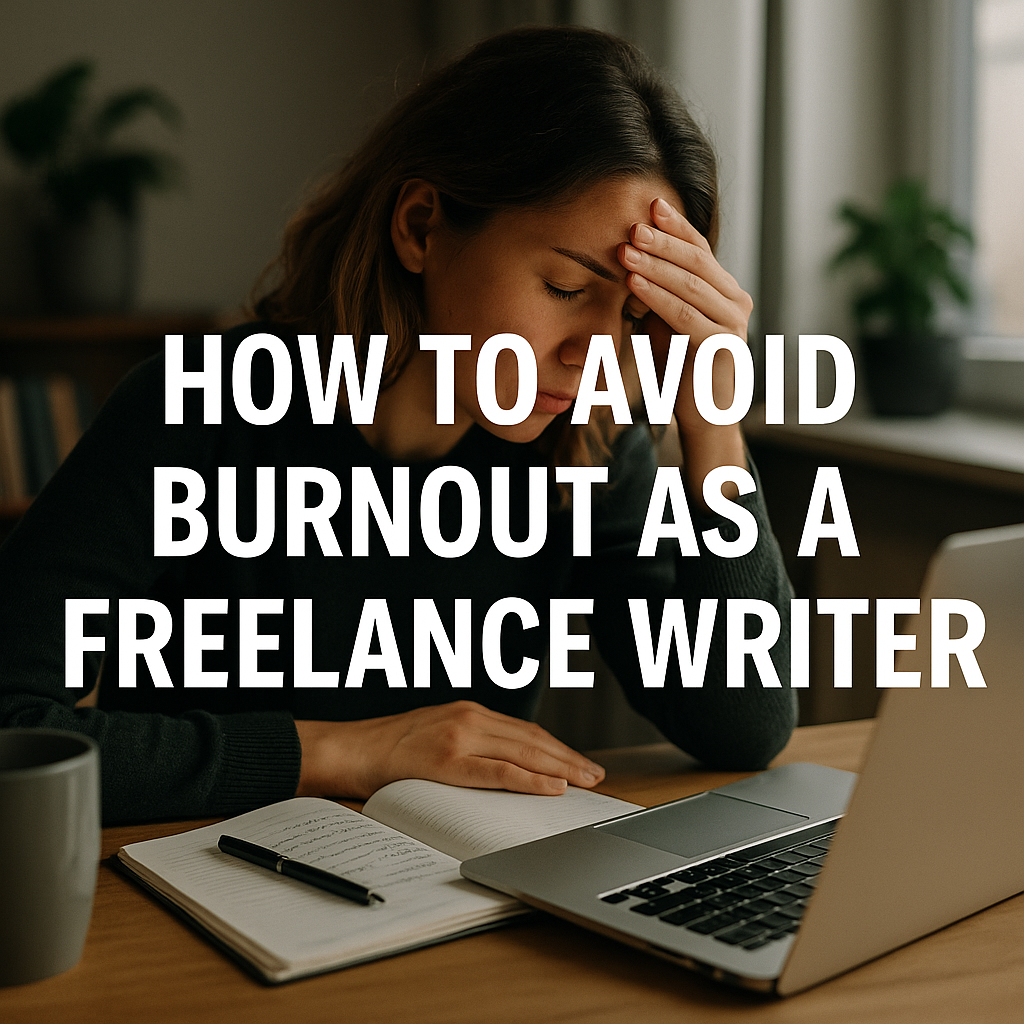Freelance writing offers independence, flexibility, and creative freedom — but it can also lead to burnout if you’re not careful. The pressure to find clients, meet deadlines, manage business tasks, and constantly produce content can take a toll on your mental and physical health.
Burnout doesn’t always show up as total exhaustion. Sometimes it sneaks in quietly as chronic stress, lack of motivation, or creative fatigue. The good news is: burnout is preventable — and manageable.
In this article, you’ll learn how to spot the signs of burnout and build healthy habits to sustain your freelance writing career long-term.
What Is Burnout?
Burnout is a state of physical, emotional, and mental exhaustion caused by prolonged stress — often from overworking or lacking boundaries.
Common signs for freelance writers include:
- Constant fatigue, even after rest.
- Losing motivation to write or pitch.
- Irritability or resentment toward clients or projects.
- Decline in writing quality or creativity.
- Feeling overwhelmed by simple tasks.
- Avoiding work altogether.
Recognizing these signs early allows you to take action before burnout gets worse.
Step 1: Set Clear Work Hours
One of the biggest challenges in freelancing is knowing when to stop working. Without fixed hours, work can bleed into evenings, weekends, and even vacations.
To prevent this:
- Define your workday (e.g., 9 a.m. to 5 p.m.).
- Create a start and end-of-day ritual.
- Avoid checking work emails or messages outside those hours.
- Schedule time off, including full days and vacations.
Remember: more hours don’t always mean more productivity. Rest improves your efficiency and creativity.
Step 2: Build Boundaries With Clients
Burnout often happens when clients expect too much or you take on more than you can handle.
Healthy client boundaries include:
- Clear contracts outlining scope, deadlines, and revision limits.
- Defined communication hours (and sticking to them).
- Saying no to last-minute or unpaid work.
- Charging fairly — low rates lead to overworking to make ends meet.
Good clients will respect your boundaries. If they don’t, they’re likely not worth keeping.
Step 3: Balance Your Workload
It’s tempting to say “yes” to every opportunity — especially when you’re trying to grow. But overcommitting is one of the fastest paths to burnout.
Tips:
- Know your capacity (how many projects or hours you can handle per week).
- Leave buffer time in your schedule for unexpected delays.
- Space out deadlines instead of stacking them.
- Prioritize high-paying or long-term clients and let go of less rewarding work.
You’re not a machine — your time and energy are limited.
Step 4: Take Regular Breaks
Breaks aren’t optional — they’re essential.
Use techniques like:
- The Pomodoro Technique (25 minutes of focus, 5 minutes rest).
- Longer lunch breaks away from your screen.
- 1–2 days off each week (at minimum).
- A full weekend or scheduled vacation every few months.
During breaks, don’t write. Rest, move, read, go outside — let your mind reset.
Step 5: Nurture Your Creativity
When writing becomes only about deadlines and money, it can lose its spark. Protect your creative energy by:
- Writing for fun (journaling, fiction, poetry).
- Reading books or blogs that inspire you.
- Exploring creative hobbies (painting, music, photography).
- Changing your environment (a new café or co-working space).
Creativity thrives in curiosity — not constant pressure.
Step 6: Stay Connected to Other Writers
Freelancing can be isolating, and isolation increases the risk of burnout.
Combat this by:
- Joining online communities or Slack groups for writers.
- Attending virtual co-working sessions.
- Having accountability partners or mentors.
- Talking openly about challenges and wins.
Knowing you’re not alone makes a big difference.
Step 7: Evaluate Your Projects and Clients
Sometimes burnout stems from working on the wrong projects.
Ask yourself:
- Do I enjoy the topics I’m writing about?
- Are these clients respectful and well-paying?
- Is this work aligned with my goals or values?
If the answer is “no” too often, it might be time to shift your focus, raise your rates, or seek better-fit clients.
Step 8: Care for Your Physical Health
Mental health and physical health are deeply connected.
Simple habits help:
- Drink enough water.
- Eat balanced meals (not just snacks at your desk).
- Stretch or exercise regularly.
- Get 7–9 hours of sleep each night.
- Limit caffeine and screen time.
A healthy body supports a focused, energized mind.
Step 9: Recognize When You Need Help
If you’re already experiencing signs of burnout, take it seriously.
What to do:
- Reduce your workload temporarily.
- Ask for deadline extensions.
- Talk to a mental health professional if needed.
- Take a longer break or even a short sabbatical.
There’s no shame in stepping back to recover. You’ll come back stronger and more focused.
Step 10: Create a Sustainable Writing Routine
Long-term success isn’t about doing more — it’s about working smarter and creating rhythms you can maintain.
Build a routine that includes:
- Focused writing blocks.
- Admin and business time.
- Creative play and exploration.
- Health and wellness habits.
- Boundaries and rest.
Consistency beats intensity when it comes to sustaining your freelance career.
Final Words: Burnout Isn’t a Badge of Honor
Being constantly busy and overworked isn’t a sign of success — it’s a warning sign. As a freelance writer, your mind is your most valuable tool. Protect it.
Burnout doesn’t mean you’ve failed — it means something needs to change. With awareness, boundaries, and self-care, you can build a writing career that energizes you, not exhausts you.
